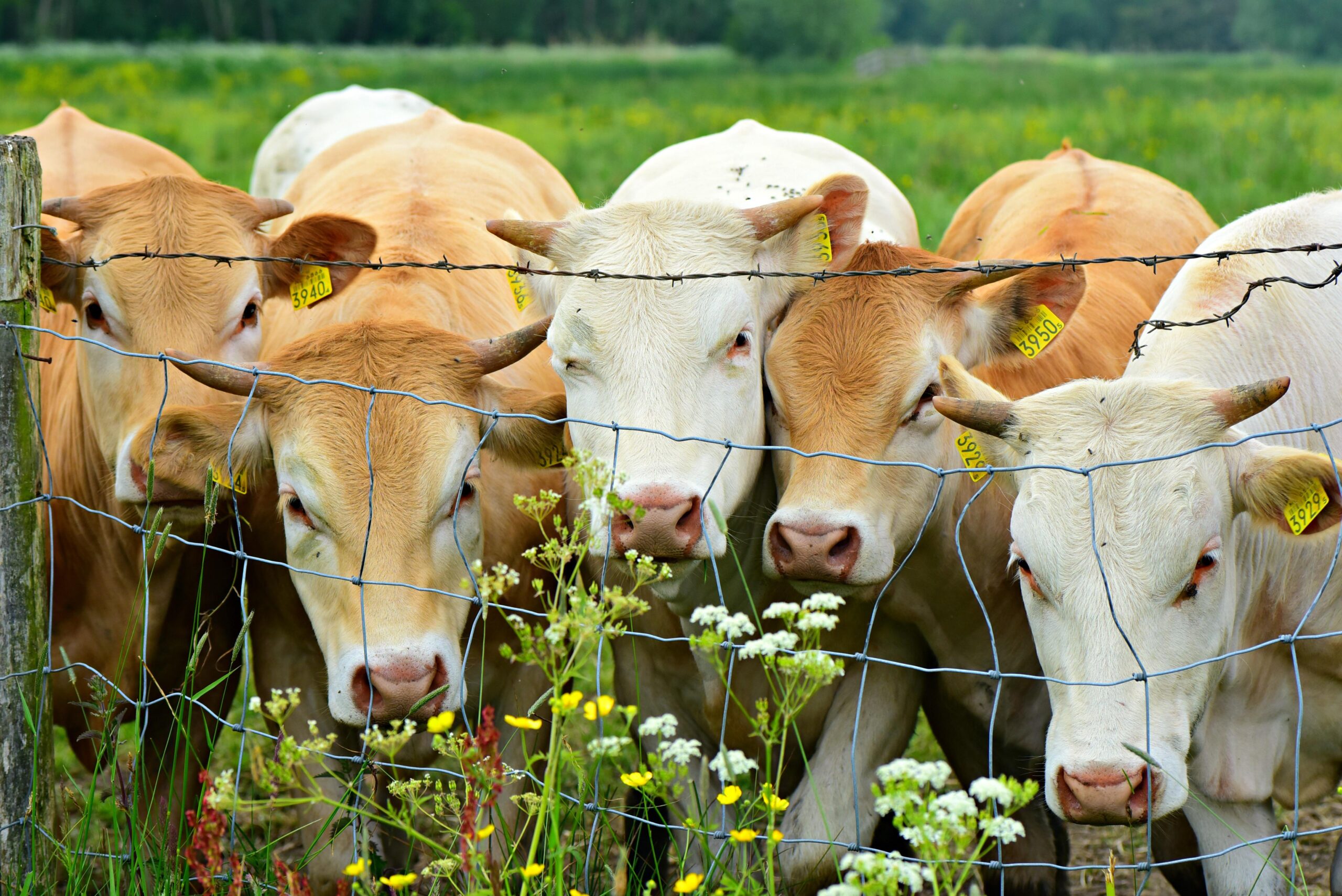Santa Gertrudis
Robert Kleberg Jr of King Ranch in the United States developed the Santa Gertrudis cattle breed.
Kleberg’s 400 000 ha ranch had 6 000 Hereford and Shorthorn cows. These animals grew well, but struggled to adapt to South Texas’s climate, insects, and diseases.
Therefore, they decided to develop a new composite breed. In 1920, a bull calf would become the foundation sire of the whole Santa Gertrudis breed. His name was Monkey, and his genetic composition was 3/8 Brahman and 5/8 Shorthorn.
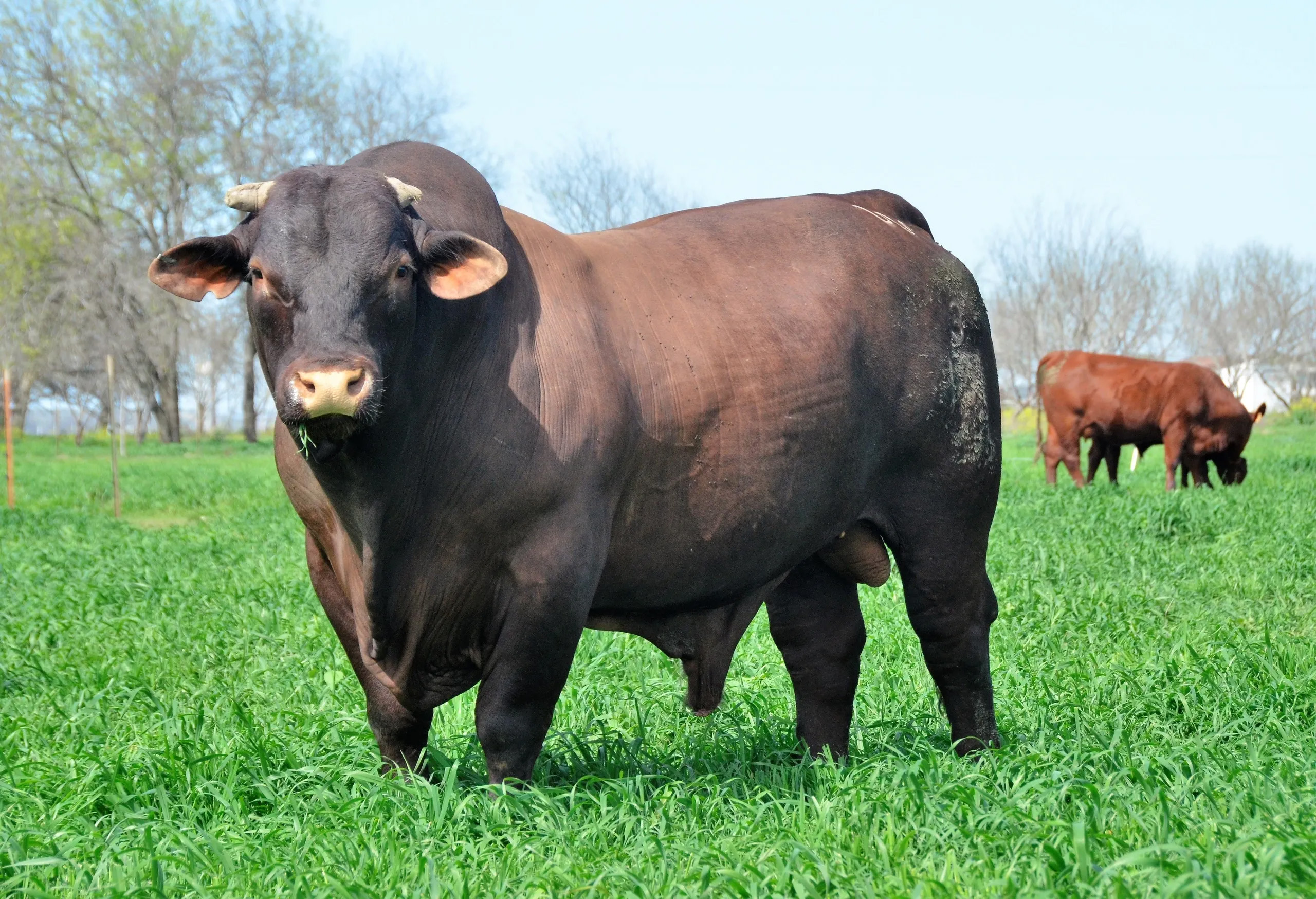
Santa Gertrudis bull. (Image source: hefteranch.com)
Because of the Brahman, the offspring were better suited to production conditions, and the Shorthorn made them grow quicker and produce better meat.
Santa Gertrudis became the first synthetic breed recognised by the USDA in 1940. The breed’s name comes from one of King Ranch’s early names: “Los Cerros de Santa Gertrudis”.
Santa Gertrudis are medium-framed cattle, with mature cows weighing 500 to 700 kg and bulls weighing 900 to 1 100 kg. Strong maternal traits help cows produce small calves, an average size of 36 kg, which grow to 230 kg as weaners. Cows’ average milk production is of top quality and has a high butterfat content. Cows can produce high-quality calves up to 15 years of age and may babysit each other’s calves while the mother grazes.
Dark red, smooth coats and well hooded eyes prevent cancer and pink eyes. Strong legs help them to travel far in search of food and water. The breed belongs to the Bos taurus group.
Production regions
Santa Gertrudis adapt to a wide range of climates, whether hot or cool, bushy or sparsely vegetated.
Use
While Santa Gertrudis cattle can be kept in closed herds on their own, they are also used in crossbreeding programmes to improve meat quality, maternal traits, and hardiness in other breeds.
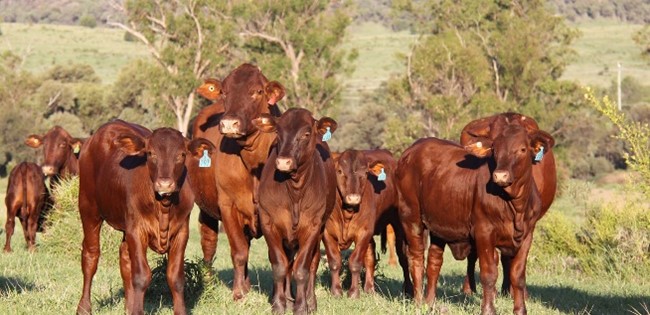
Santa Gertrudis cows and calves. (Image source: gyranda.com.au)
Performance tests show that the breed is one of the fastest growers, gaining 1,6 to 2 kg per day. They also have superior feed conversion, with many bulls consuming less than 6 kg of feed per kg of weight gain. The breed is perfectly adapted for feedlots because of their excellent grading and weight gain potential.
Meat quality
The breed is the “number one performer on veld and feedlot,” according to Santa Gertrudis SA, with slaughter percentages among the highest of all breeds, averaging around 65 percent. The meat is of excellent quality as well.
Shorthorn
Teeswater and Durham shorthorn cattle were bred in North East England from Teeswater and Durham cattle. Comet, a famous bull, produced superior offspring that made him a legend in cattle breeding. The breed’s name
comes from their short horns.
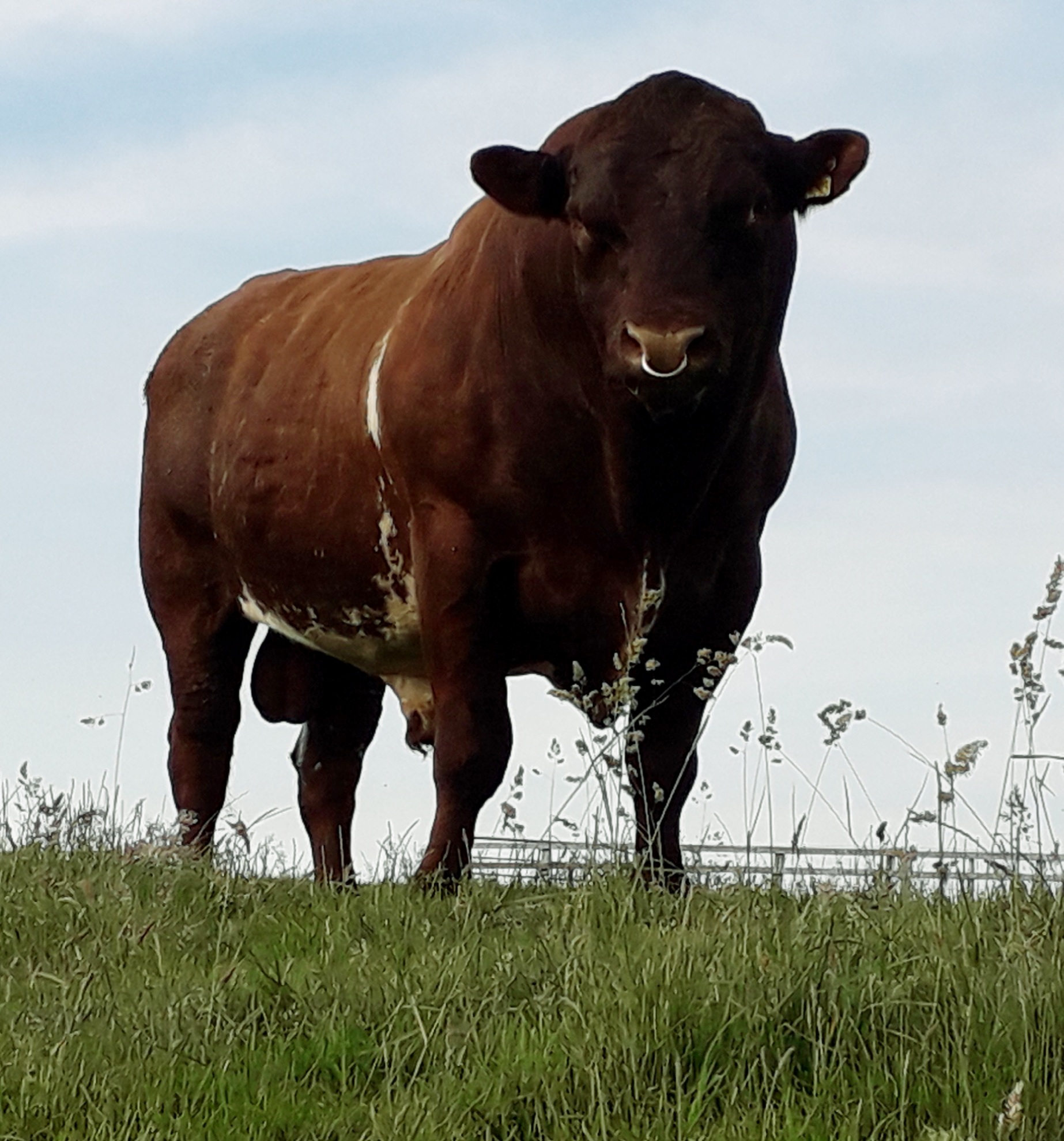
Shorthorn bull. (Image source: beefshorthorn.org)
The Shorthorn is a medium-sized breed with a red, roan (a mixture of red and white), or sometimes white coat. As a dual purpose breed, the cattle can be used for milk or beef production, and their size depends on the production environment. Shorthorn cows average 500 kg and bulls 950 kg.
High fertility, easy calving, milk production, docility, early sexual maturity, and mothering ability are the breed hallmarks. The Shorthorn has been used to create 52 new breeds, including the Bonsmara, Santa Gertrudis, and Beefmaster in South Africa. The breed belongs to the Bos taurus group.
Production regions
As a result of the breed’s adaptability, it is produced all over Southern Africa. The breed is able to finish off on the veld, producing top grades of quality and tender beef.
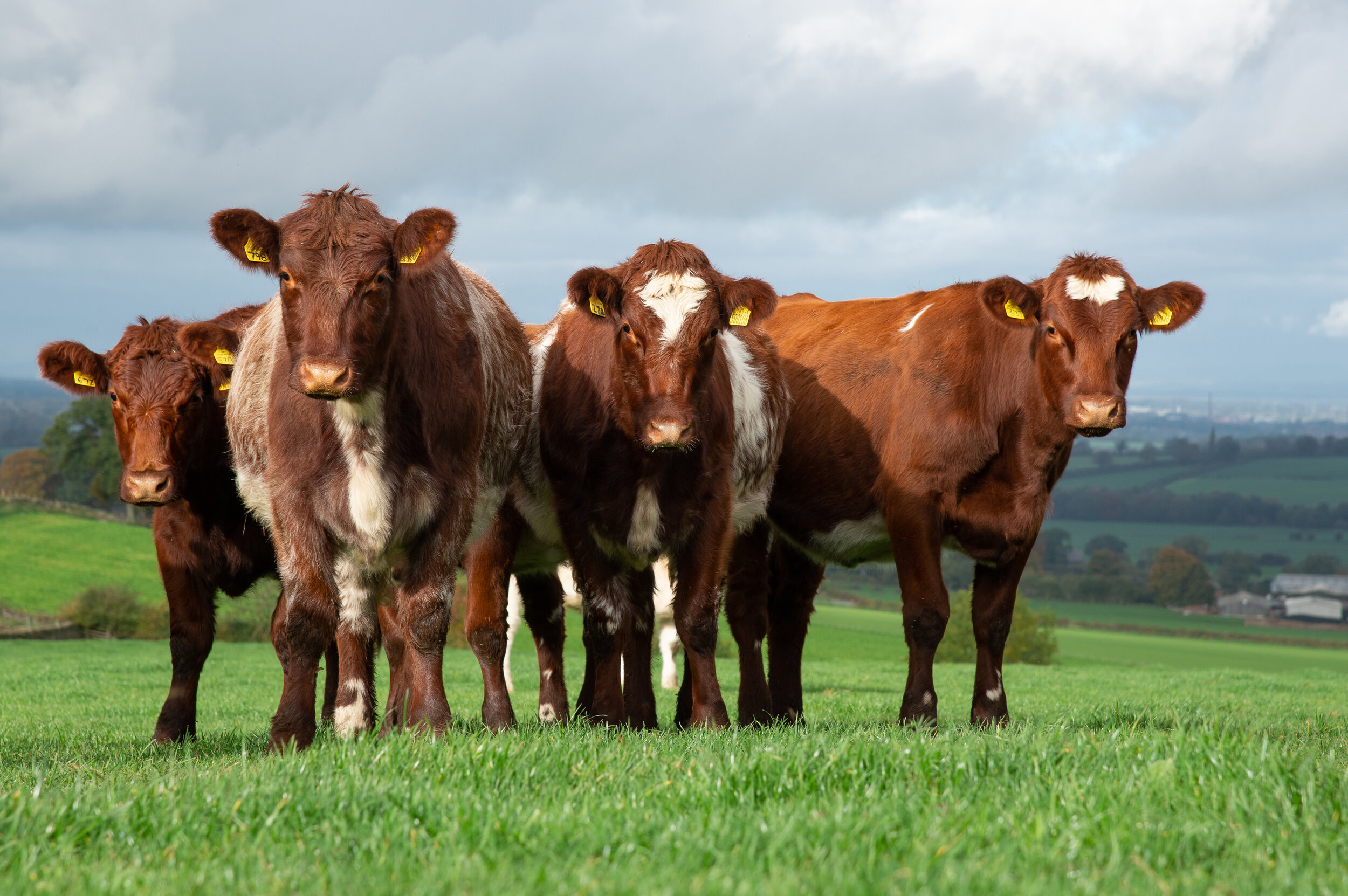
Shorthorn cows. (Image source: beefshorthorn.org)
Use
The breed can be used in closed herds on its own as well as in cross-breeding programmes to improve the qualities of indigenous breeds. The ability to grow quickly and easily is said to be passed down by both bulls and cows.
Meat quality
Because the Shorthorn is an English breed, its meat has a lot of marbling, which means it has a lot of flavour.
Simbra
The Simbra is a new breed of cattle that was created in the United States in the 1960s by crossing Simmentalers and Brahmans to get the best qualities of each breed.
South Africa registered the first Simbra in 1986. It was a mix of the Simmentaler’s meat and milk production and the Brahman’s resistance to disease and hardiness.
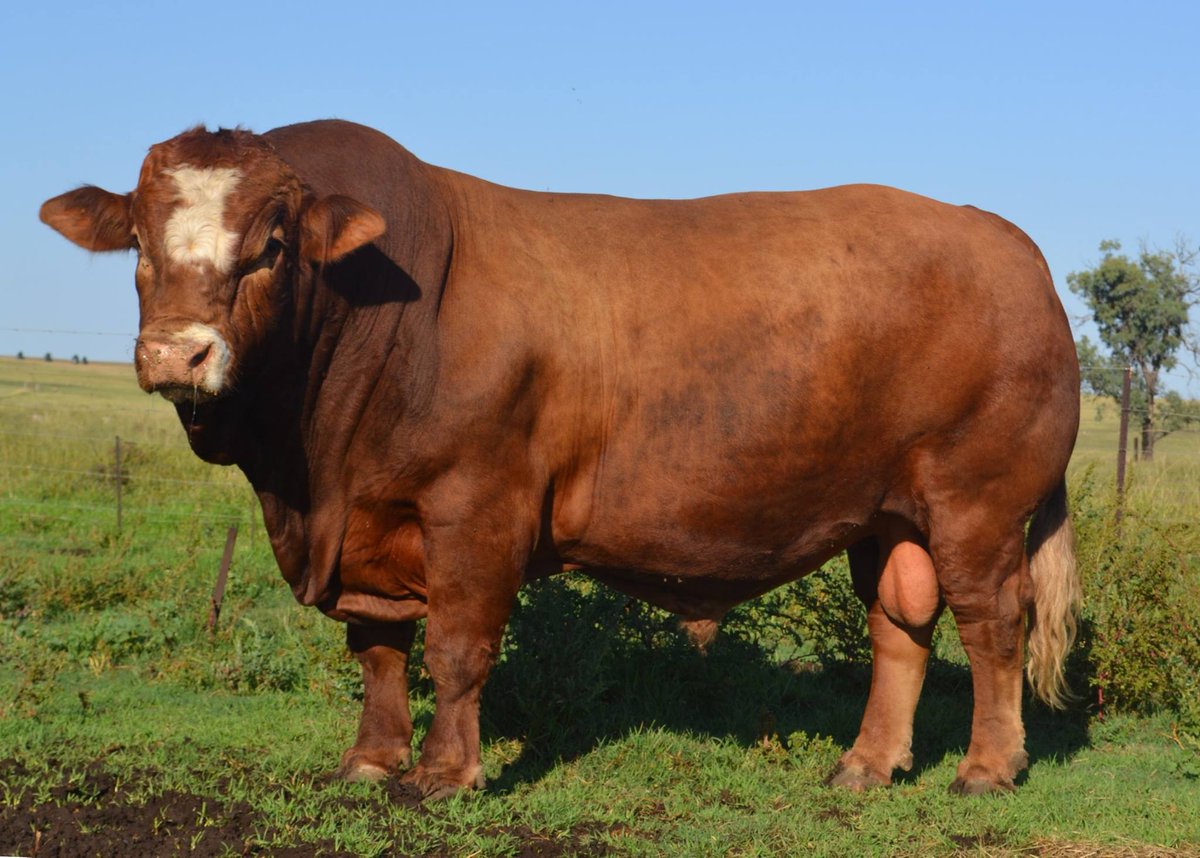
Simbra bull. (Image source: twitter.com)
Simbra cattle must meet strict physical and performance requirements to be registered, which is why they’re so popular in Southern Africa. Fertility is prioritised.
Simbra cows weigh 450 to 580 kg and bulls 600 to 800 kg. The production environment affects the size of the cattle. In areas with abundant feed, cattle will be slightly larger than in poorer areas.
Simbra cattle have a small hump and larger ears than European breeds. Breeders are creating polled lines.
Simbras are brown or red with white faces. Third and fourth generation animals must have pigmented eyelids to prevent eye and skin cancer. Curly and woolly-coated animals cannot register because they do not thrive under stress.
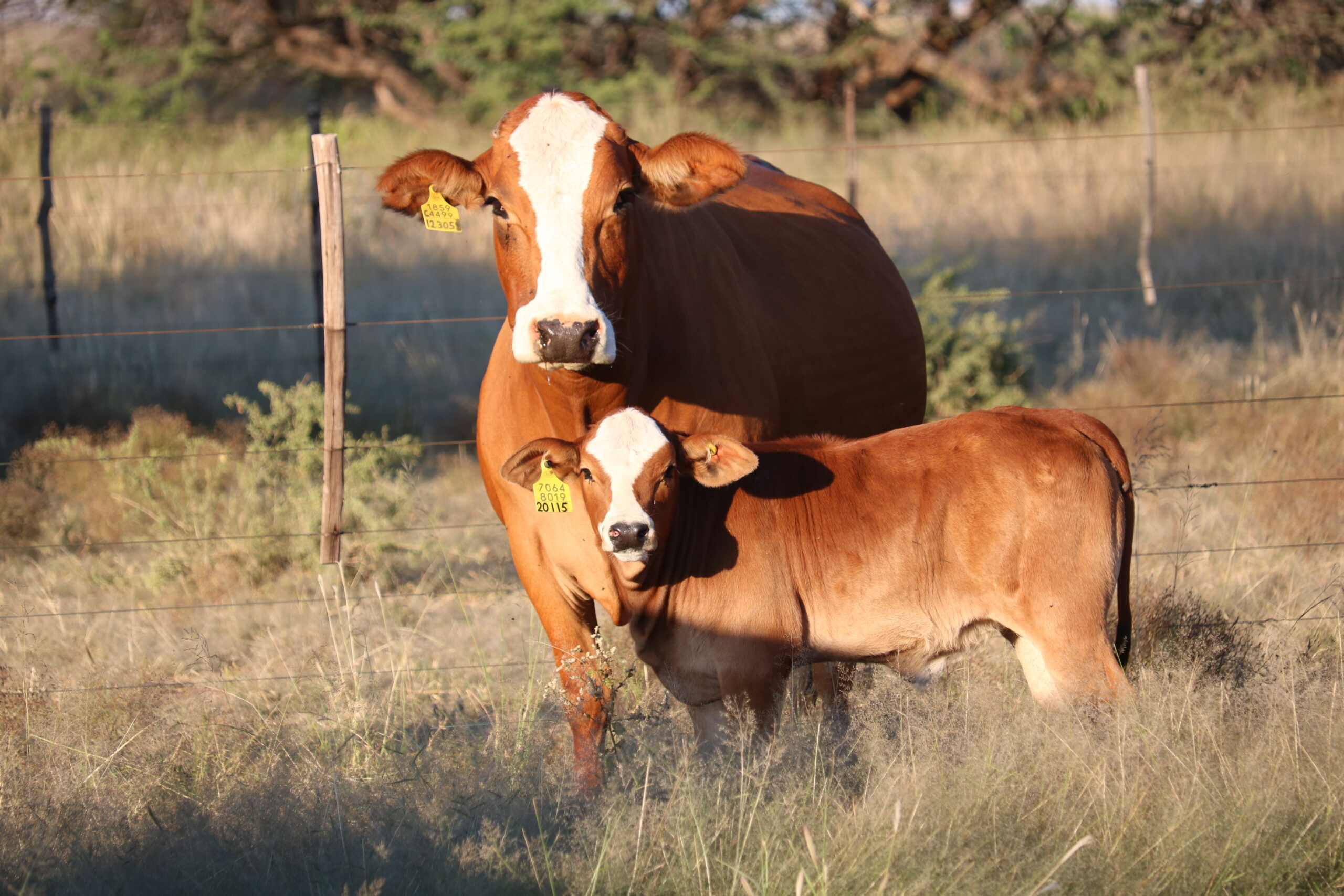
Simbra cow and calf. (Image source: kamab-simbra.com)
Production regions
In temperate regions, where weaner production is important, the Simmentaler percentage will be higher, while the Brahman percentage will be higher in more strenuous conditions. Most of the animals are produced by South Africa, Namibia, and Botswana. The breed produces beef efficiently, especially in extensive systems.
Uses
Using a Simbra instead of a crossbreeding system ensures that you always have the best mix of Simmentaler and Brahman. It is also easier to manage a herd as a result of this. They are used in commercial herds for crossbreeding, and to produce calves that feedlots want.
Meat quality
The quality of the meat might be considered as better than Brahman meat.
Simmentaler
Southern Africa’s beef industry uses Simmentalers. The breed’s name comes from Switzerland’s Simme River Valley.
The Simmentaler has good muscle and little fat. Cows weigh an average of 480 kg and bulls weigh 650 to 950 kg, depending on environmental conditions. The breed belongs to the Bos taurus group.
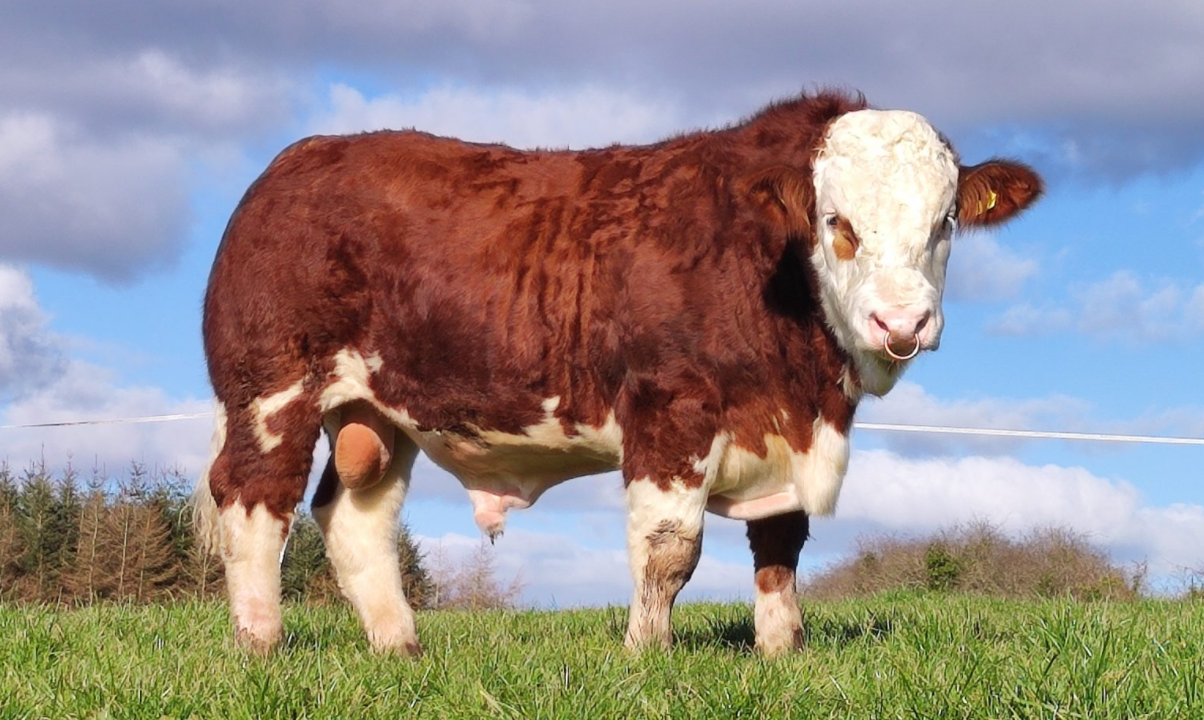
Simmentaler bull. (Image source: agriland.ie)
Simmentaler cattle have smooth coats in gold, red, white, black, or red in Europe and America. South African animals are white and dark red, with well-pigmented eyes. Cattle are calm and easy to handle.
The breed was developed to produce meat, milk, and draught animals. In the 1950s, Namibian cattle produced most of their income from cream.
Production regions
Simmentalers gained popularity in South Africa only in the 1960s, after interbreeding tests revealed their superior performance. Simmentalers were imported in large numbers from Namibia, and later from Germany and Austria. Imports fell after 1975 as a result of the development of locally adapted Simmentalers, which are now produced all over the country.
The Simmentaler Cattle Breeders’ Society of Southern Africa was founded in 1964 by breeders from Namibia and South Africa, and since then, it has been the first to move away from subjective animal judging by combining performance testing figures with appearance in the show ring.
Uses
Simmentalers excel in closed herds and when mixed with other breeds to create hybrid power. Because of the way Simmentaler bulls accelerate growth in other breeds, producing weaners that fetch premium prices due to their high demand in feedlots, Simmentaler SA refers to them as the “king of crossbreeding”. The cows have outstanding maternal qualities.
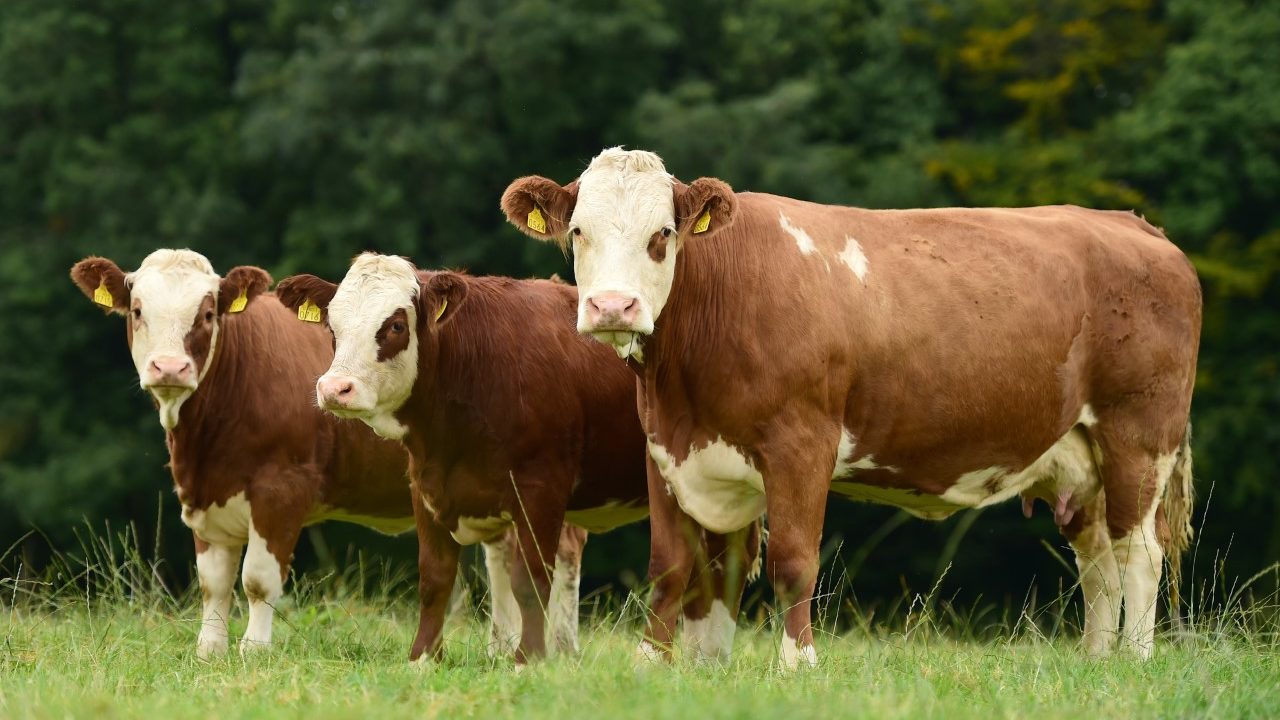
Simmentaler cow and calves. (Image source: agriland.ie)
Meat quality
In crossbred cattle, Simmental cattle provide good growth, a large frame, and thus a higher beef yield. With white fat and excellent marbling, it improves the meat’s quality.
References
Southafrica.co.za. (2022). South African Beef Breeds. [online] Available at: https://southafrica.co.za/south-african-beef-breeds.html
Loubser, A., Schutte, N. and Hofmeyr, I., (2007). Cattle breeds of South Africa. Pretoria, AgriConnect, Pages 97-165.

